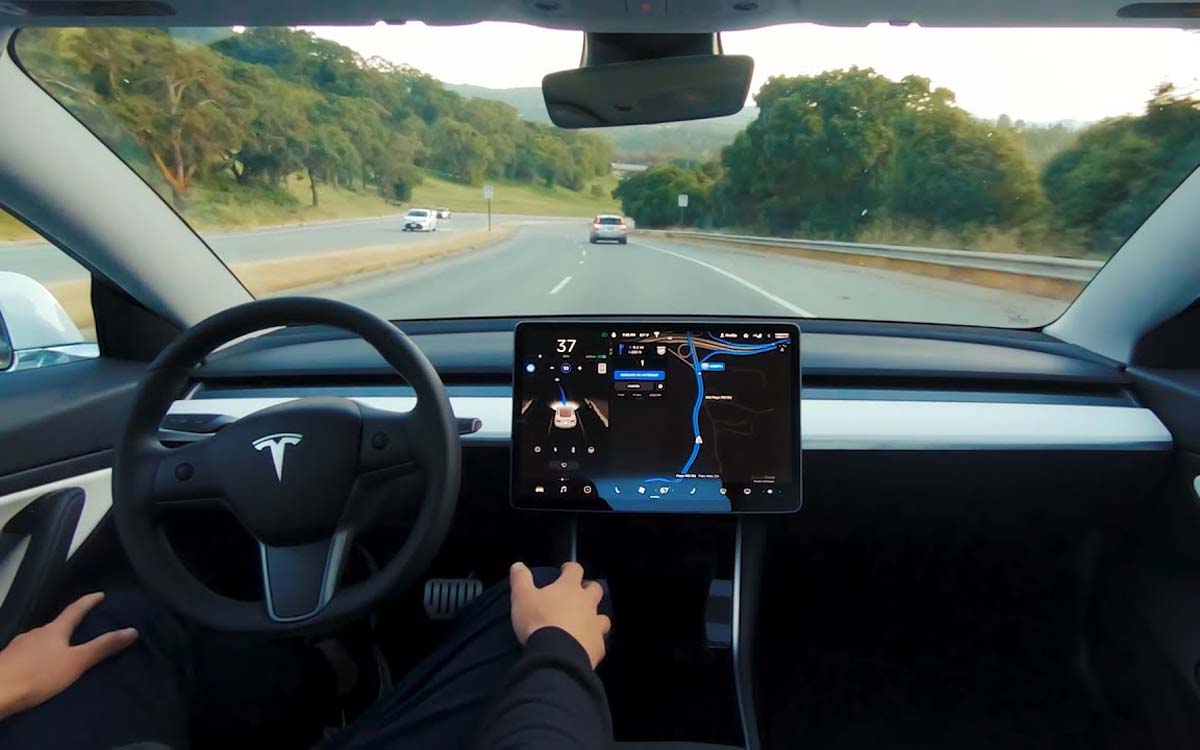
Tesla has decided to calm the game regarding the controversy around the Rolling Stop function of the FSD. Indeed, the manufacturer confirms that it has removed it from the fully autonomous driving software via the 10.10 update. This should relieve the NHTSA, the US federal agency in charge of road safety.
As you may know, Tesla had been at the heart of a new controversy for a few weeks already. The cause ? The integration of a feature called Rolling Stop in October 2021 on the FSD (Full Self Driving) software, its fully autonomous driving technology. The principle of the Rolling Stop is simple: it authorizes the car to run a stop when several conditions are met:
- The car must be traveling under 10 km/h
- no objects, pedestrians or cyclists should be detected by the Tesla Vision cameras
- visibility must be sufficient
- all roads leading to the intersection in question must be limited to 50 km/h
Despite all these prerequisites, the manoeuvre, namely not stopping completely at a Stop sign, remains illegal in all 50 U.S. states. This is why the NHTSA, the American federal agency in charge of road safety, decreed this Wednesday, February 2, 2022 a safety recall concerning 54,000 Tesla which use the FSD and which have access to the Rolling Stop function.
FSD Update 10.10 Improvement List
Finally, the authorities’ alerts made the automaker bend. Indeed, he just released an OTA update for the FSD. Version 10.10 of the fully autonomous driving software incorporates several changes, starting with the pure and simple removal of the Rolling Stop function. But let’s see in detail the fixes provided by this new version of the FSD:
- Smoother turning maneuvers and cornering lane selection thanks to high-fidelity trajectory primitives
- Disabling the Rolling Stop feature in all FSD profiles (note: the feature was detailed previously)
- Improved generalized static object network by 4% due to improved terrain trajectories
- Improved fluidity when stopping for crossing objects at intersections by modeling light and large obstacles to better quantify the urgency of slowing down
- Possibility to change lanes to avoid static obstacles, when possible
- Improved smoothness of merge processing by enforcing greater consistency with previous cycle speed control decisions
- Improved handling of flashing amber lights by adding more precautions for cases where crossing vehicles do not stop
- Improved understanding of intersection right-of-way through improved intersection extent modeling
As a reminder, there remains another problem to be solved at Tesla. Indeed, complaints about cases of phantom braking with the Autopilot activated have multiplied with the NHTSA.



